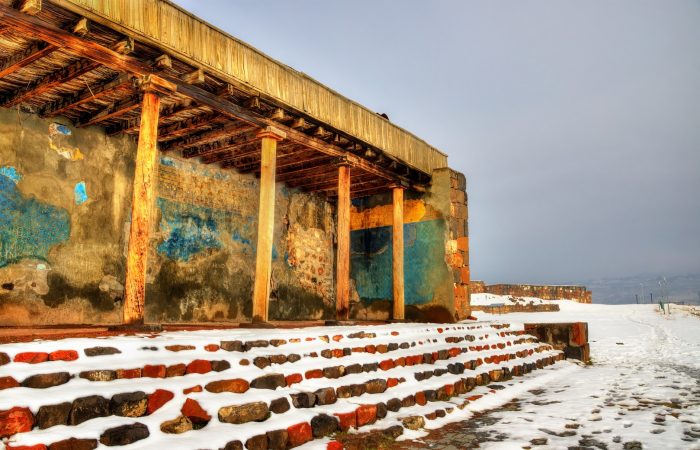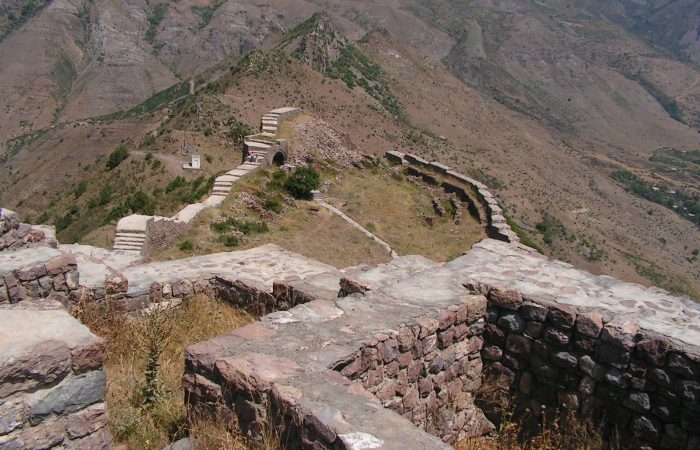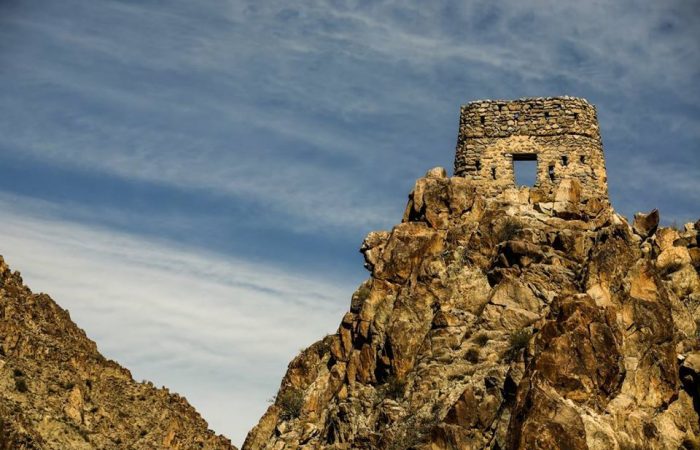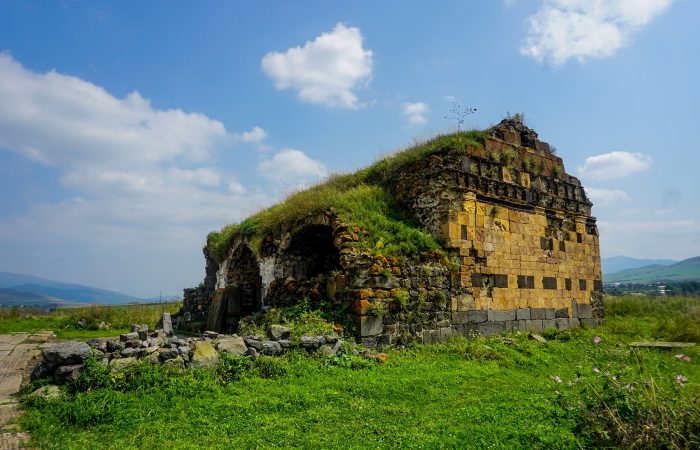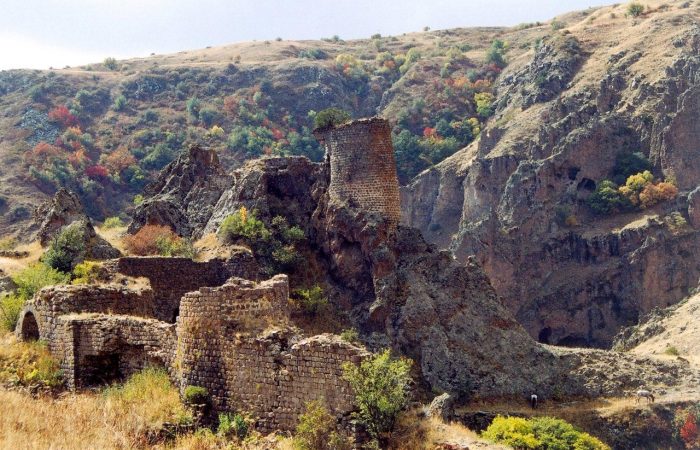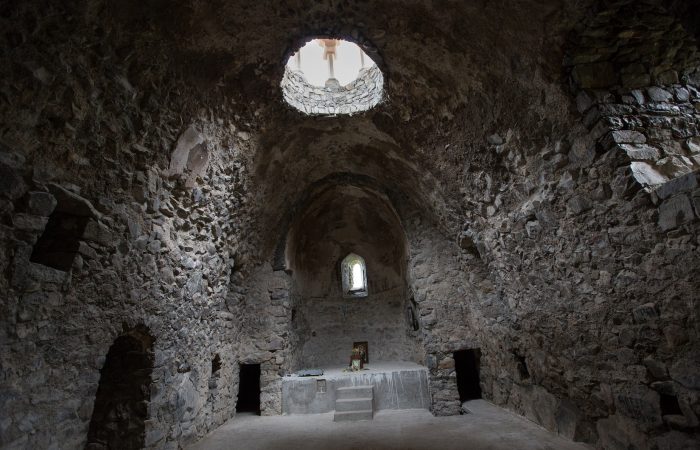Baghaberd Fortress: General
Baghaberd is a fortress in the Syunik province of Armenia. It’s one of the ancient fortresses of Armenia, which was proclaimed inaccessible due to its location. When in danger, the fortress used to shelter the people residing around.
Baghaberd Fortress: Brief Historical Account
The fortress is located along a ridge across the River of Voghji. Baghaberd was the citadel of the city of Kapan. The construction of the fortress is attributed to Prince Baghak. His name was mentioned in Armenian historian Stepanos (Stephen) Orbelyan’s “History of the Province of Syunik,” in which the historian who was also the Metropolitan bishop of Syunik Province wrote that Baghak from the family of Sisak inherited the region and constructed the fortress of Baghaberd, and the region came to be known as the “Land of Bagh.”
The fortress had double walls out of which only several partially ruined towers and pyramids of 8 meters have been preserved. The tower walls of the fortress were divided into two groups. The outer group is at the foot of the mountain, on the banks of the rivers Voghji and Giratagh. Mainly the towers along the River of Giratagh have been preserved. The towers of the inner walls can be found at the height of 150-180 meters above the outer walls. The towers include holes in them with the diameter of 7-8 centimeters. They either served as spy-holes or boiling liquids were poured on the enemy through them. The fortress also had secret underground roads, which were used not to lose connection with the outer world when the fortress was besieged.
Not too high from the course of River Voghji there is a spring. Folklore has it that the waters of the spring were being taken inside the fortress via clay pipelines.
A number of significant roads passed through Baghaberd. Also, another road that started from the fortress took to the Monastery of Tatev.
Baghaberd Fortress: Fall
After the city of Kapan was ruined in 1103, Baghaberd became the capital city of the Kingdom of Syunik. Because of the tense political situation the treasures and thousands of manuscripts of all the monasteries of Syunik had been gathered in the fortress. The lasting and harsh fights eventually turned in favor of the Seljuks of Gandzak who in 1170 managed to capture the fortress and plunder the treasures and the manuscripts the number of which made up around 10,000.
The fall of Baghaberd resulted in the end of the Kingdom of Syunik.
Baghaberd Fortress: Construction Date
The Fortress of Baghaberd came to be known during the 4th-5th centuries. That’s when Persian King Shapur II was defeated below the walls of the fortress. In most sources, it is mentioned that the fortress was erected in those centuries. Yet there is some controversy, since several scientists believe that Prince Baghak lived in 1850 BC. If this is true, then the fortress has a history of 3850 years. Nevertheless, this is yet not proved, and therefore still remains as an assumption.
Baghaberd Fortress: Legend
A legend has it that the Fortress of Baghaberd was tied with a rope to another fortress opposite it, more precisely in a rock rising on the right of Voghji River. There used to be a huge door, which used to close the road passing through the canyon as soon as the rope was stretched.
To sum up, Baghaberd Fortress currently lies in ruins just like any other Armenian fortress. Yet this fortress is one of the rare ones that can be equally visited in summer and winter. So make sure you include this site, which represents great historical value, in your list of “things to see” despite the time of your arrival to Armenia.






